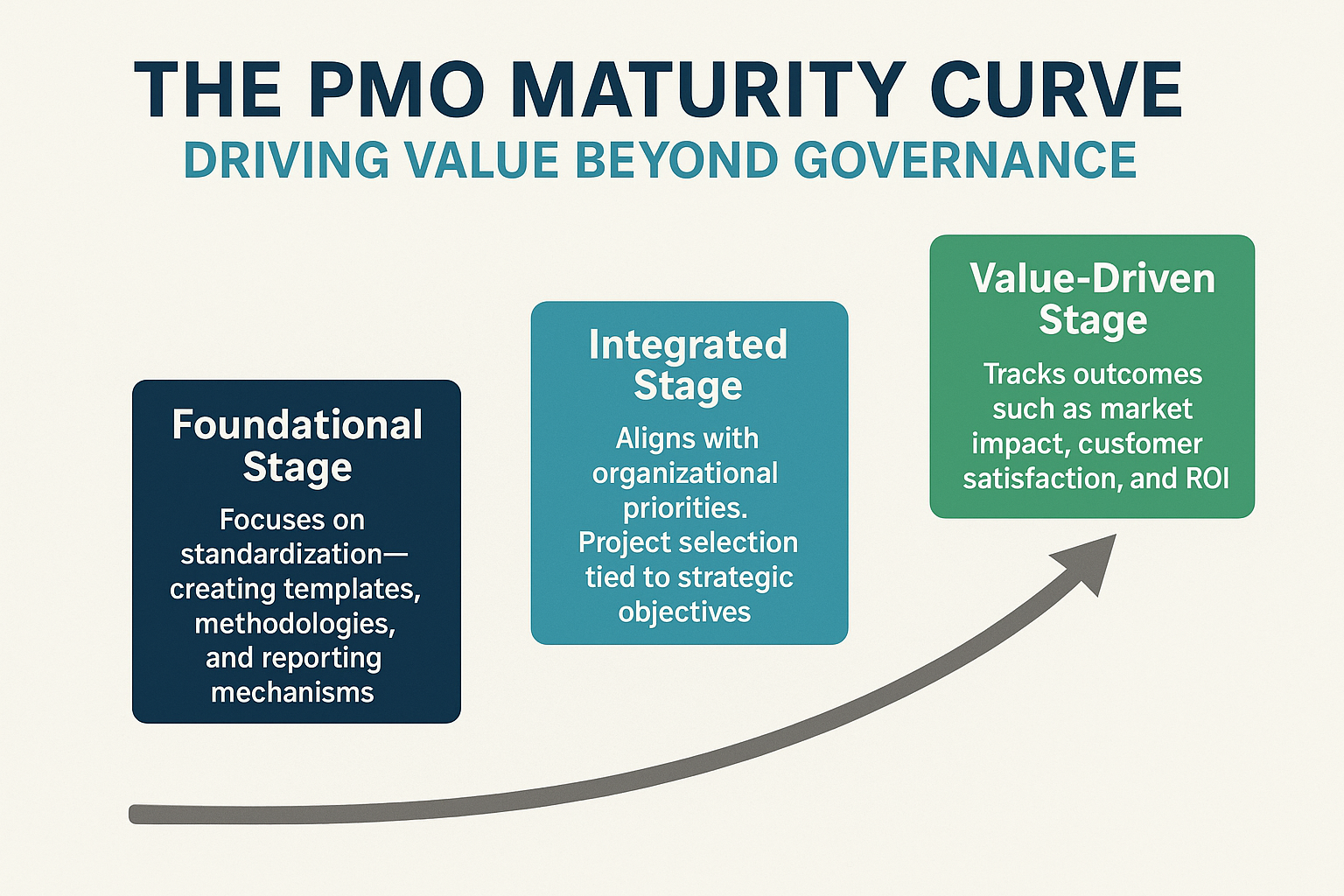Effective governance is the backbone of any successful Project Management Office (PMO). It provides the structure and accountability needed to achieve consistent project success. Governance establishes rules, policies, and processes that guide decision-making, keeping projects aligned with organizational strategy. For PMO leaders, designing a governance model that fits company culture and goals can improve outcomes, manage resources better, and build executive confidence.
1. Align Governance Objectives with Business Goals
To set up effective governance, start by defining clear objectives that align with business goals. These objectives should support the company’s strategic vision and detail how the PMO will contribute. For example, if an organization focuses on rapid innovation, the governance structure should support agility and fast decision-making. According to Gartner, 75% of successful PMOs design governance models to back up their organization’s strategy (Gartner Insights on PMO Governance, 2023).
Actionable Tip: Include input from key departments to create governance objectives that are both well-aligned and broadly supported, which can reduce friction during implementation.
2. Create a Clear Decision-Making Framework
A strong decision-making framework is essential for effective governance. This framework should outline who makes which decisions—from resource allocation to project prioritization. Clearly defining roles and responsibilities helps reduce delays and ensures that all decisions support both project and business goals.
Many PMOs use structured review boards or steering committees to evaluate project progress and guide priorities. Committees made up of senior leaders provide oversight and keep projects aligned with the organization’s goals. The Project Management Institute (PMI) states that well-defined governance structures increase project success rates by over 30% (PMI Pulse of the Profession, 2023).
Actionable Tip: Regularly review and adapt decision-making processes to address evolving project needs or organizational shifts, making the governance framework flexible and responsive.
3. Establish Accountability and Compliance Standards
For PMO governance to be effective, set up accountability measures to monitor project progress and compliance. Standards should include guidelines for performance metrics, reporting, and documentation requirements. Compliance checks, such as mandatory project checkpoints and audits, ensure that teams follow approved processes.
Using key performance indicators (KPIs) can set expectations and track project progress, creating transparency for both teams and executives. McKinsey’s research shows that compliance standards can reduce project failure risk by nearly 20% (McKinsey Project Compliance Report, 2022).
Actionable Tip: Use a dashboard that consolidates key metrics and compliance indicators, allowing for quick oversight and early detection of governance issues.
4. Implement Transparent Communication Protocols
Transparent communication is essential for effective governance. Establishing formal communication protocols keeps stakeholders informed of project progress, scope changes, and potential issues. Regular reports and meetings allow for real-time feedback, while a centralized dashboard enhances transparency across departments.
Clear communication channels also allow PMOs to adjust plans in response to feedback from executives or organizational shifts. Deloitte’s research shows that 68% of PMOs with transparent communication see better alignment with business goals (Deloitte Project Management Insights, 2022).
Actionable Tip: Set up a central communication platform that consolidates project updates, metrics, and documents, making it easy for stakeholders to stay informed.
5. Continuously Monitor and Optimize Governance
PMO governance should be adaptable, reflecting organizational growth and changing priorities. Continuous monitoring lets PMO leaders see which governance practices are valuable and which need adjustment. Regular evaluations, such as quarterly reviews or post-project audits, help identify inefficiencies or bottlenecks.
A best practice for optimization is to include feedback from project teams and stakeholders. This real-world input enables the PMO to fine-tune governance processes. Harvard Business Review notes that PMOs that update their governance frameworks regularly are 45% more likely to meet project objectives (Harvard Business Review on PMO Governance, 2022).
Actionable Tip: Schedule quarterly governance reviews to assess effectiveness, make data-driven improvements, and maintain alignment with business strategy.
Conclusion
Effective PMO governance is essential for strategic alignment, accountability, and project success. By setting clear objectives, structuring decision-making, enforcing accountability, ensuring transparency, and optimizing regularly, PMOs can enhance their value and impact. Establishing strong governance not only improves outcomes but also positions the PMO as a critical partner in organizational success.
Reference
- Gartner Insights on PMO Governance | Gartner | 2023
- PMI Pulse of the Profession | Project Management Institute | 2023
- McKinsey Project Compliance Report | McKinsey | 2022
- Deloitte Project Management Insights | Deloitte | 2022
- Harvard Business Review on PMO Governance | Harvard Business Review | 2022




